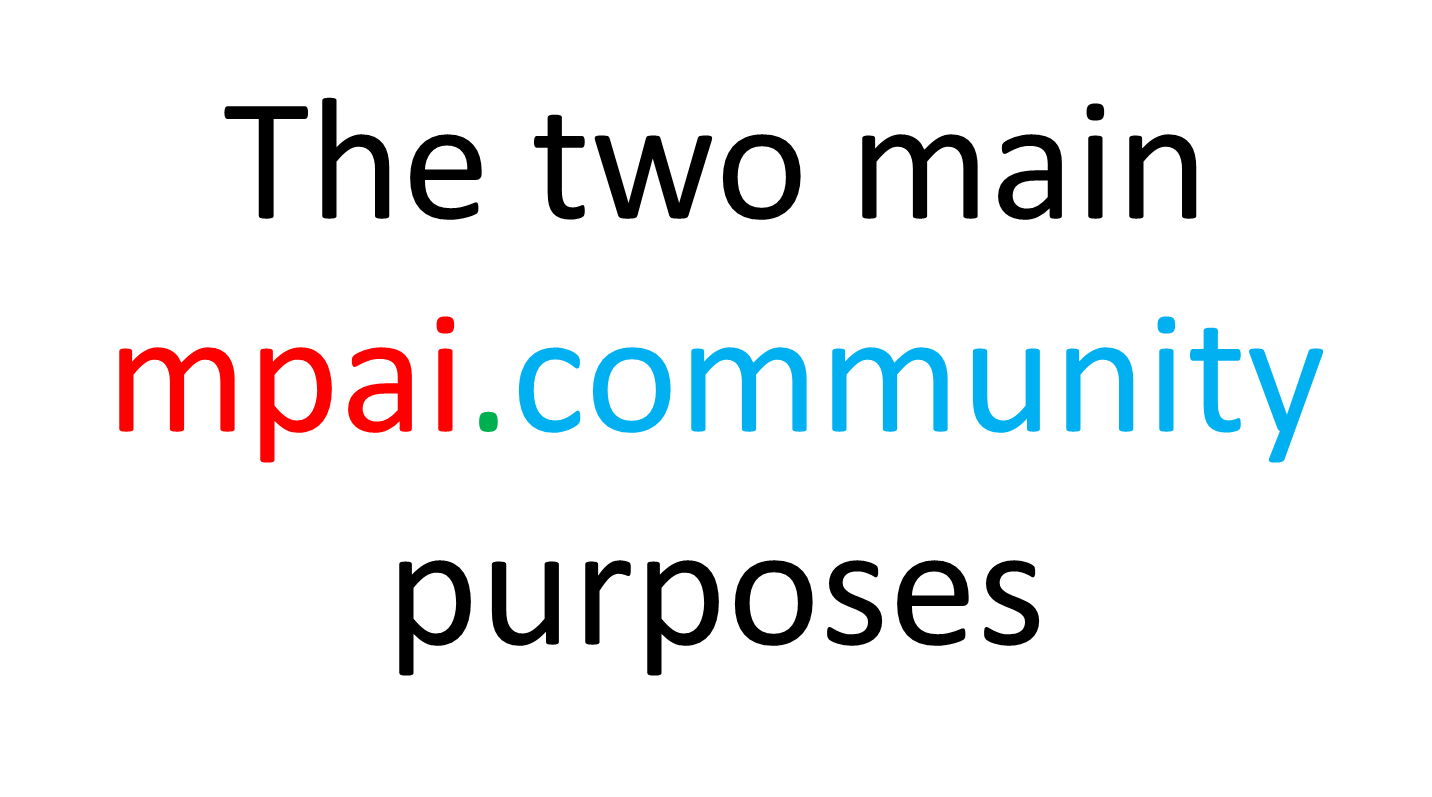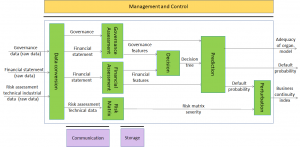So far I have discussed the shortcomings of the organisation called ISO: feudalism, chaos, hypocrisy, obtuseness and incompetence. Fortunately, we are not stuck with ISO. The good side of our age is that, if you are unhappy of a situation (here I am talking of standards), you have the chance to do better.
On the 19th of July 2020, I did exactly that when my post New standards making for a new age launched the idea of MPAI – Moving Picture, Audio and Data Coding by Artificial Intelligence.
In what sense and to what extent does MPAI take advantage of this freedom and for what purposes? This article will try and answer this question.
One reason for creating MPAI is to respond to the needs of the MPEG constituency, ill-served by ISO’s self-imposed “FRAND” constraints and by its inability to react to the changes of the industry induced by MPEG standards and the effects wrought by industry changes on MPEG itself. MPAI intends to reverse the trend that has made progressively harder, especially for some industries, to use MPEG standards. MPAI does not believe that the alternative of offering “royalty free” standards to industries is sustainable even in the short term, as recent news may be read to confirm.
MPAI takes an antipodal attitude to MPEG with respect to the nature of the requirements that drive the work on a standard. In MPEG functional requirements, made widely known to industry, used to drive the development of a standard. Users were left to “discover” the commercial terms when the standard was done, possibly 4 years after the start of the work, but actually much later than that because of the time it usually took to develop licence(s) and in some cases, never.
MPAI would love to make both functional and commercial requirements available to users. However, providing a full set of commercial requirements may not by supported by antitrust regulations. Therefore, MPAI comes as close as possible to that by making known to users the business model, that MPAI calls Framework Licence (FWL), that IPR holders will eventually apply in their licence(s). The FWL does not contain the monetary values and other data that would be frown upon by antitrust authorities.
These are the main features of the MPAI FWL
- As a minimum, the FWL will state that the total cost of the license(s) will be in line with the total cost of the licenses for similar data coding/decoding technologies, considering the market value of the specific technology. While this is the minimum, the FWL may go as far as to provide a cap on the total licence cost.
- The FWL will also state that access to the standard shall be granted in a non-discriminatory fashion.
- The FWL may envisage that IPR holders make available their patents if all IPR holders agree to do so without requiring a licence. Of course, if certain events specified in the FWL happen, e.g. IPR holders may decide to withdraw their offer. Therefore, the FWL specifies the terms of the licence, but not the values, that IPR holders will make available in case such events happen.
- Documents submitted by MPAI members that relate to a standard shall contain a declaration that the proponent will make available the terms of the Licence related to their patents according to the FWL, alone or jointly with other IPR holders after the standard is approved and not after commercial implementations of the standard become available on the market.
- Each member will declare it will take a Licence for the patents held by other members, if used, within one year from the publication by patent holders of their licence terms. Non-members remain obligated to acquire licences to use MPAI standards as mandated by the legislation of the territories in which they use MPAI standards.
- Each MPAI member shall inform the Secretariat of the result of its best effort and transparent identification of IP that it believes is infringed by a standard that is being or has already been developed by MPAI.
- Finally, when the MPAI standard is approved, IPR holders express their preference on the entity that should administer the patent pool of the standard.
So far, we have talked about how MPAI intends to work, but that is not the only driver. MPAI intends to work differently also on the content of the standards.
After decades of hardly visible work by researchers, Artificial Intelligence (AI) is arousing the attention of the public at large. Various AI technologies have been and are being investigated with the goal to provide more efficient and more intelligent compression. MPAI retains the proposal made by the Italian Standards Organisation UNI in 2018 to consider coding as a single field of which instances are: images, moving pictures, audio, 3D Graphics and other data such as those generated in manufacturing, automotive, health and other fields, and generic data.
Even though MPAI has not been formally incorporated, experts are busy collecting use cases where AI-enabled coding can provide new solutions that enhance industry performance while benefitting end users.
Posts in this thread
- The two main MPAI purposes
- Leaving FRAND for good
- Better information from data
- An analysis of the MPAI framework licence
- MPAI – do we need it?
- New standards making for a new age
- The MPEG to Industry Hall of fame
- This is ISO – An incompetent organisation
- This is ISO – An obtuse organisation
- What to do with a jammed machine?
- Stop here if you want to know about MPEG (†)
- This is ISO – A hypocritical organisation
- The MPEG Hall of fame
- Top-down or bottom-up?
- This is ISO – A chaotic organisation
- A future without MPEG
- This is ISO – A feudal organisation


